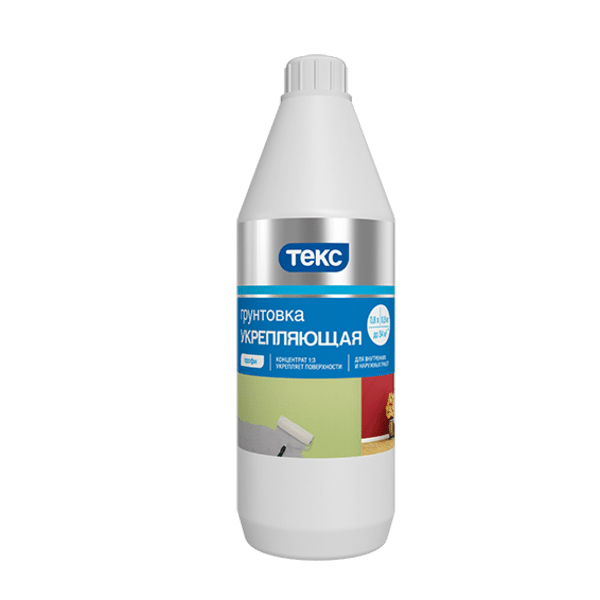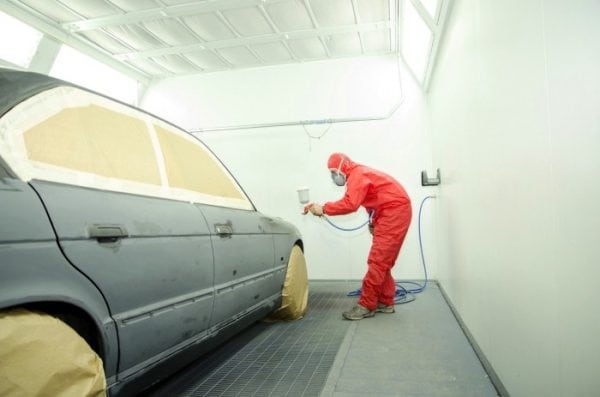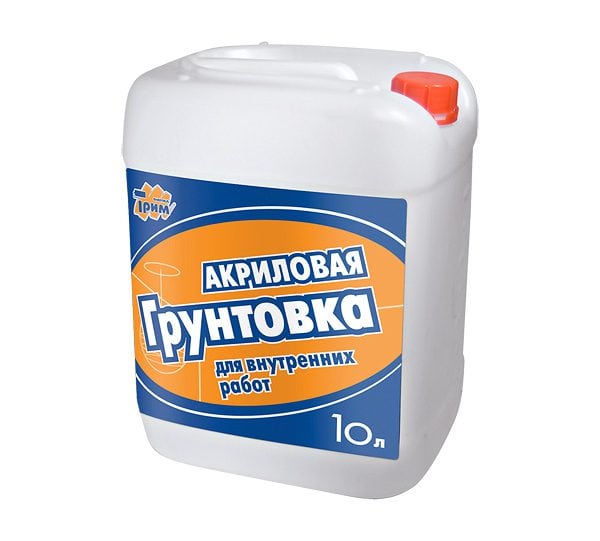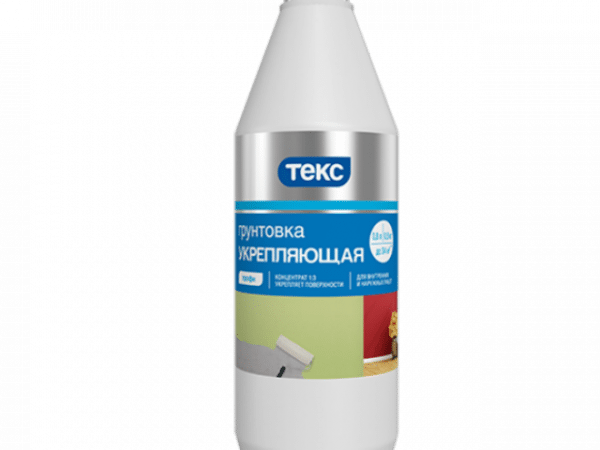In order to increase the service life of the coating, before you lay the tiles, wallpaper, plaster or paint the walls, you need to thoroughly prepare the surface. A quality basis for performing a variety of work is called a primer. It is also called a primer - a strengthening primer is one of the varieties of primers.
- When priming is required
- Features of choice
- Acrylic as a base for soil
- Safety regulations
- Storage and handling
- Tips for choosing the right primer
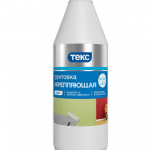
When priming is required
Primer coating has recently become part of the repair. For a long time, as a priming material, wallpaper glue, diluted paint, and PVA glue were simply applied. In the modern market of building materials, the choice of primers is huge. Their tasks are the most diverse:
- protect surfaces from corrosion;
- give an insulating effect;
- improve adhesion of paint layers to the substrate.
Primers are distinguished by type and purpose. The depth of their penetration into the base, the strengthening of this base and the quality of adhesion of the subsequently applied material to the surface, depend on this. The use of primers reduces paint consumption, which allows significant savings, promotes uniform application of paint, glue, protects surfaces from mold and mildew.
to contents ↑Features of choice
To choose the right primer, you need to know the type of surface to be treated, the features of this room, the properties of the material, which is planned to be applied subsequently. According to their properties, primers are divided into deep penetration primers and reinforcing primers.
Deep penetration primers can soak the substrate up to 10 cm deep. This is achieved with the help of components whose components are ten times smaller in size than that of reinforcing primers. Reinforcing primer mixes work closer to the surface layers of the base.
The reinforcing primer has an effect on the material, similar to the primers of deep penetration, but the composition is characterized by a large amount of adhesive. It glues loose particles of surfaces that tend to crumble.
These primers are not recommended for use on sturdy surfaces because they must be completely absorbed into the substrate. Otherwise, the drying layer has poor adhesion.
The strengthening primer can be distinguished by the appearance of the resulting coating. She leaves a noticeable varnish film.
to contents ↑Acrylic as a base for soil
Among the reinforcing primers, an acrylic primer is best known. it water dispersion primercontaining small particles of artificial resins. It does not include solvents and plasticizers. It does not wash off, has no color and dries quickly.
Specifications:
- deep penetration into the processed basis;
- the coated surface "breathes", can let steam through;
- fireproof;
- glues dust and holds it together;
- low consumption, saves paint.
Due to the fact that soil materials can be used for indoor and outdoor use, they are universal.
Application of acrylic primer:
- Used for processing seamless floors and finished products. Compatible with drywall, cement fiber, gypsum boards.
- When applied on gypsum structures, it gives them moisture-proof properties.
- It is used for processing bases coated with lime, lime-cement and lime-gypsum plasters, as a primer-impregnation primer before applying paint, performing wallpaper gluing and tile laying.
- It is used for deep priming of plaster before painting.
The primer is traditionally applied with a brush to the walls and floor, a roller is used for the ceiling. Work is performed at a temperature not lower than + 5 ° C. After completion of work, all materials used are washed with plenty of water. To remove the dried mixture, use mechanical tools.
to contents ↑Safety regulations
When performing work, it is necessary to ventilate the premises. In case of contact with eyes, rinse immediately with water. The storage method is normal: inaccessible to children places. The container refers to household waste and is disposed of in a standard way.
Storage and handling
Move and store in a sealed container of the manufacturer at temperatures up to + 40 ° C.
If the primer is cold-resistant, then short-term storage of not more than one month is allowed at temperatures not lower than –30 ° С. Primers withstand five freezing cycles. It is necessary to defrost the primer naturally at room temperature. The primer retains its properties 24 months from the date indicated on the box.
to contents ↑Tips for choosing the right primer
In order to prevent cracks, peeling of paint and putty from appearing during operation, the wallpaper does not come off, you need to choose the right primer that should ensure reliable adhesion of the base and the finishing material.
The following are some criteria that influence your choice:
- The presence of one base in the primer and the finishing material will subsequently provide good performance characteristics of the coating.
- How much the treated surface is able to absorb the primer is taken into account when selecting a primer.
- A strengthening primer is applied to substrates that do not need to be treated. Deep penetration priming will cost more.
- If the ceiling is operated in conditions of high humidity, it is necessary to use special universal primer coatings that protect against mold.
The leaders in the production of soil coatings are companies such as Knauf, Ceresit, Primer. The process of applying a primer is easy, does not require special skills.

